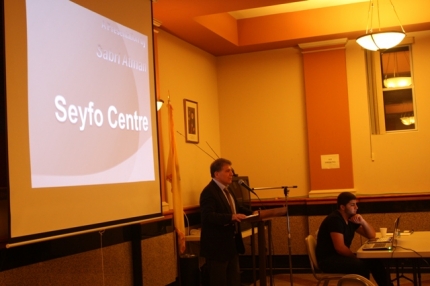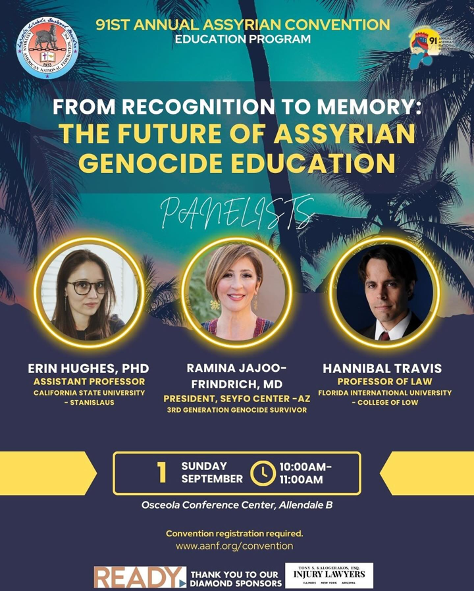Please introduce yourself and tell us about your current study and major?
My name is Ishtar Issa, daughter of two patriotic Assyrians, Dr. Sargoun and Emily Issa. I was born and raised in Iran, and moved to Los Angeles with my family in 2001. I completed my undergraduate degree from UCLA with honors and I am now completing my dream by pursing a degree in Law.
What do you know about Seyfo Center and its activities?
I became aware of the Seyfo Center through my dear friend, Mr. Sabri Atman, (founder and director of the Assyrian Seyfo Center in Europe). The goal of Seyfo Center is to work for international recognition of the Genocide, known in Assyrian as sword, perpetrated against Assyrian, Armenian, and Greek people by Ottoman Turks during World War I (1915-18). In order to achieve its goals Seyfo Center organizes conferences, seminars and other information activities that spread the information regarding the Genocide that has yet to be recognized.
Why is the Assyrian, Armenian and the Greek Genocide important to you?
I believe that all genocides are important, because humanity, justice, and truth is important. But the Assyrian genocide is important to me because 750,000 Assyrians—75% of the population – were slaughtered by the Ottoman Empire. Therefore the world should be informative about the crimes done in the past, in order to be able to prevent similar tragedies from happening again. It is not only important to know about the Genocide, but for the world to recognize the slaughtering of hundreds of thousands of people especially if we are to say that the genocide will never occur again. If the international community doesn’t acknowledge the wrongdoings of certain nations, then there is potential that it can occur again.
Is it important for our youth and the new generation to know about their past? How do you think the past is going to affect their future?
As Dr. David Perley once said “One’s being an Assyrian is a synthesis of heritage, religion, and culture, and emotional consciousness that transcends all diversities, theological demographics, and otherwise. To be an Assyrian is to feel: the past is my heritage I shall forget it not; the present, my responsibility; the future, my challenge.”.
If we allow ourselves to ignore and deny one massacre, we are allowing ourselves to ignore and deny current and future massacres. So yes, it is very important to know who you are, and where you come from. It is not sufficient enough to only find out the city in which your parents were born in, or what church you were baptized in. Eating the Assyrian foods, or getting an Assyrian tattoo doesn’t qualify you as a nationalist Assyrian. A true Assyrian goes back to their roots and studies their history. We have contributed so much to the world, and little is noted about us. When one is informed about one’s past, they will build a desire to become nationalistic, and engage in securing the survival of their nation through humanitarian, political and educational activities.
In your opinion, what should Seyfo Center do to educate and motivate the young and the new generation?
Although Seyfo Center can do a lot in educating the young about our history, I believe the first step is to educate and motivate the parents. Assyrian parents have an active duty to push their children to study the Assyrian history, language, and culture. Many parents themselves are ill informed about the atrocities against our people so for Seyfo center to construct educational seminars on how to present the history of the Assyrians, is a start.
When it comes to educating the youth, many schools are utilizing videos and other social activities along with books to increase focus on the material. I believe that one of the best ways to enhance and motivate students is to create videos on youtube. This will yield a positive response from students, as people can share and send videos through social networking sites such as Facebook. By setting a trend in what it means to be an “Assyrian” we are creating the possibility of a domino effect in which one friend follows another and the chain continues.
By Linda Abraham



